These are the stories for today...
Be safe out there!
Tom
2 seriously injured in crash of small plane at Big Lake airport
By Zaz Hollander, Loren Holmes
BIG LAKE — Two men were seriously injured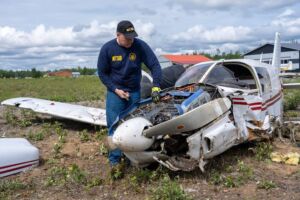 in the crash of a small plane Tuesday morning at Big Lake’s airport.
in the crash of a small plane Tuesday morning at Big Lake’s airport.
Both pilot and passenger were severely injured, according to Matanuska-Susitna Borough emergency services director Ken Barkley. The crash was reported at 9:35 a.m., Alaska State Troopers said.
Troopers said the adult male pilot of the Piper PA-32R-300 and an adult male passenger were taken to a Mat-Su hospital with serious injuries.
The National Transportation Safety Board is investigating the crash.
NTSB investigator Mark Ward, at the crash site Tuesday, said the plane was coming in for a landing.
Witnesses said the plane was over nearby trees and made a “steep turn to try and make the runway” but didn’t quite make it, Ward said.
The investigation will focus on the engine, he said, adding that the priority now is for the pilot to recover from his injuries.
“We don’t know if he had a flight control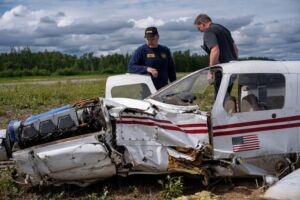 malfunction or if it was an engine failure,” Ward said. “Right now, his health is more important ...”
malfunction or if it was an engine failure,” Ward said. “Right now, his health is more important ...”
The airport was closed to air traffic for several hours and reopened around noon, according to a spokesman for the Alaska Department of Transportation and Public Facilities.
The plane is registered to Northern Aviation LLC, based in Palmer. Owner Jeff Helmericks said both men involved in the crash are certificated pilots and they were conducting a “transition training” flight on Tuesday. Helmericks said he didn’t want to provide details about the crash until the investigation was further along.
“We’re going to figure out exactly what the problem is,” he said.
The single-engine plane, also known as a Piper Cherokee Lance, can seat up to six people.
2 seriously injured in crash of small plane at Big Lake airport
By Zaz Hollander, Loren Holmes
BIG LAKE — Two men were seriously injured in the crash of a small plane Tuesday morning at Big Lake’s airport.
in the crash of a small plane Tuesday morning at Big Lake’s airport.
Both pilot and passenger were severely injured, according to Matanuska-Susitna Borough emergency services director Ken Barkley. The crash was reported at 9:35 a.m., Alaska State Troopers said.
Troopers said the adult male pilot of the Piper PA-32R-300 and an adult male passenger were taken to a Mat-Su hospital with serious injuries.
The National Transportation Safety Board is investigating the crash.
NTSB investigator Mark Ward, at the crash site Tuesday, said the plane was coming in for a landing.
Witnesses said the plane was over nearby trees and made a “steep turn to try and make the runway” but didn’t quite make it, Ward said.
The investigation will focus on the engine, he said, adding that the priority now is for the pilot to recover from his injuries.
“We don’t know if he had a flight control malfunction or if it was an engine failure,” Ward said. “Right now, his health is more important ...”
malfunction or if it was an engine failure,” Ward said. “Right now, his health is more important ...”
The airport was closed to air traffic for several hours and reopened around noon, according to a spokesman for the Alaska Department of Transportation and Public Facilities.
The plane is registered to Northern Aviation LLC, based in Palmer. Owner Jeff Helmericks said both men involved in the crash are certificated pilots and they were conducting a “transition training” flight on Tuesday. Helmericks said he didn’t want to provide details about the crash until the investigation was further along.
“We’re going to figure out exactly what the problem is,” he said.
The single-engine plane, also known as a Piper Cherokee Lance, can seat up to six people.
NTSB Door-Plug Hearing Lambastes Boeing, FAA
Inadequacies on three fronts blamed for Alaska Airlines door-plug blowout.
Mark Phelps
The National Transportation Safety Board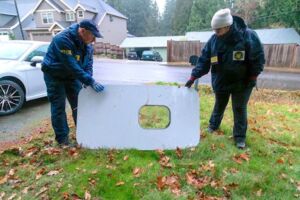 (NTSB) cited Boeing for inadequate “training, guidance, and oversight” that ultimately led to the now-infamous in-flight blowout of a mid-exit door (MED) plug on a near-new B737-9 a year and a half ago. That’s the conclusion the NTSB reached in a public hearing into the incident today (June 24).
(NTSB) cited Boeing for inadequate “training, guidance, and oversight” that ultimately led to the now-infamous in-flight blowout of a mid-exit door (MED) plug on a near-new B737-9 a year and a half ago. That’s the conclusion the NTSB reached in a public hearing into the incident today (June 24).
The NTSB further concluded that Boeing’s two-year-old (at the time) voluntary safety management system (SMS) “was inadequate, lacked formal FAA oversight, and did not proactively identify and mitigate risks.” The board further cited the FAA as being ineffective in ensuring that Boeing addressed “repetitive and systemic” non-conformance issues that were part of the manufacturer’s parts-removal process.
NTSB Chairwoman Jennifer Homendy said at the hearing, “The safety deficiencies that led to this accident should have been evident to Boeing and to the FAA—[they] should have been preventable. This time, it was missing bolts securing the MED plug. But the same safety deficiencies that led to this accident could just as easily have led to other manufacturing quality escapes and, perhaps, other accidents.”
A further result of today’s hearing is new safety recommendations from the NTSB to the FAA and Boeing. The board also reiterated previous recommendations made to the FAA, Airlines for America, the National Air Carrier Association and the Regional Airline Association.
An online summary of today’s hearing is available here.
First electric passenger plane lands at JFK in milestone flight
Historic test flight marks turning point for sustainable air travel
By Kurt Knutsson, CyberGuy Report Fox News
It's not every day aviation history is made,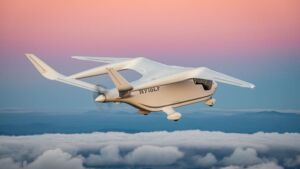 but June 2025 marked a real milestone for New York and the world of electric flight.
but June 2025 marked a real milestone for New York and the world of electric flight.
For the first time, a passenger-carrying electric airplane landed at John F. Kennedy International Airport, and it wasn't just a test. There were actual people on board.
The flight that made headlines
Kyle Clark, founder and CEO of Beta Technologies, was at the controls as the company's electric aircraft flew from East Hampton to JFK. With four passengers on board, the trip covered about 70 nautical miles in just over half an hour. That's right, a fully electric plane, carrying people, quietly and efficiently making its way through the skies above New York.
Clark put it simply, "This is a 100% electric airplane that just flew from East Hampton to JFK with passengers on it, which was a first for the New York Port Authority and the New York area. We covered 70 odd nautical miles in 35 minutes."
The message this sent was clear that electric air travel is here, and it's practical.
Why this matters for everyday travel
The real takeaway isn't just the novelty of the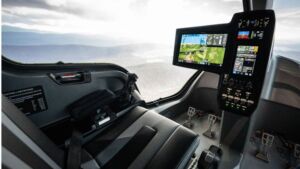 flight, but what it means for the future of getting around. Electric aircraft like this one are quiet, which means happier communities near airports. They're also much cheaper to operate.
flight, but what it means for the future of getting around. Electric aircraft like this one are quiet, which means happier communities near airports. They're also much cheaper to operate.
As Clark noted, "Charging this thing up and flying out here cost us about $8 in fuel. Of course, you have to pay for the pilot and the airplane, but, fundamentally, it's way less expensive."
Passengers on the flight could talk to each other the whole time, thanks to the lack of noisy engines and propellers. That kind of comfort and accessibility is exactly what could make electric air travel a hit with commuters and travelers looking for a better way to get from one point to another.
The bigger picture: Electric air travel is getting closer
Transportation companies are already eyeing electric battery-powered aircraft for short city trips, especially those that can take off and land vertically. The idea is to help travelers beat traffic and reduce emissions, all while offering a smoother, quieter ride.
The Federal Aviation Administration (FAA) has also stepped in, finalizing new rules in October for pilot training and certification for air taxis. This move was described as "the final piece in the puzzle for safely introducing these aircraft in the near term." With regulations in place and companies like Beta Technologies pushing forward, the dream of electric air taxis is closer than ever.
Beta Technologies: Leading the charge
Beta Technologies, based in Vermont and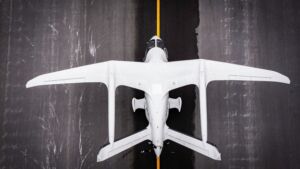 founded in 2017, is at the forefront of this movement. The company recently raised $318 million to fund production, certification and commercialization of its electric aircraft, bringing its total funding to over $1 billion. It's not just building planes. It's building the infrastructure needed to support electric flight across the country.
founded in 2017, is at the forefront of this movement. The company recently raised $318 million to fund production, certification and commercialization of its electric aircraft, bringing its total funding to over $1 billion. It's not just building planes. It's building the infrastructure needed to support electric flight across the country.
What's next for electric air travel?
The success of this flight is a strong signal that electric air travel is becoming a practical option, not just a futuristic idea. Beta's aircraft can fly up to 250 nautical miles on a single charge, making it ideal for short hops between cities and suburbs. As more companies join the effort and more charging stations are built, it's easy to see how electric air travel could become a regular part of how we get around, especially in busy urban areas.
Kurt's key takeaways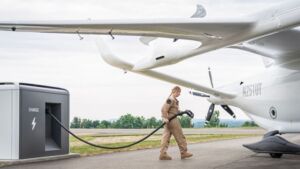
So, what's the real story here? The first passenger-carrying electric airplane touching down at JFK is way more than a cool headline. It's proof that electric air travel isn't just some futuristic thing. It's actually here, it works and it's ready to shake up how we get around. With rules that make sense, plenty of investment and people getting more curious and excited, the future of clean, quiet and easy-to-access air travel is looking pretty promising.
https://www.foxnews.com/tech/first-electric-passenger-plane-lands-jfk-milestone-flight
NTSB Final Report: Fly Gyros LLC M24 Orion
Medical Personnel Initially Reported That The Pilot Had Suffered A Stroke Just Before Takeoff...
Location: Venice, Florida Accident Number: ERA23LA267
Date & Time: June 10, 2023, 11:16 Local Registration: N49PF
Aircraft: Fly Gyros LLC M24 Orion Aircraft Damage: Substantial
Defining Event: Loss of control on ground Injuries: 1 Serious
Flight Conducted Under: Part 91: General aviation - Personal
Analysis: The pilot was attempting to take off when his gyroplane veered off the left side of the runway and impacted a fence substantially damaging the fuselage. According to a first responder, the engine and propeller were running, and the pilot, who appeared incoherent, was trying to climb out of the gyroplane. Once the engine was turned off, the pilot was removed from the aircraft and air-lifted to a trauma center.
Medical personnel initially reported that the pilot had suffered a stroke just before takeoff and had been dealing with a dissecting carotid artery for several weeks before the accident. The pilot’s wife told law enforcement that she spoke with her husband before the flight. She said he seemed normal, and he told her that a previous mechanical issue had been fixed, and the gyroplane was fit to fly. Postaccident examination of the gyroplane revealed no mechanical issues that would have precluded normal operation at the time of the accident.
A postaccident medical review revealed the pilot experienced an acute embolic stroke near the time of the crash, likely caused by dissection of the carotid artery. The pilot had a history of left internal carotid artery stenosis, but no prior carotid dissection. The presence of internal carotid artery stenosis would have put the pilot at increased risk of experiencing an embolic stroke in the absence of dissection. Furthermore, carotid dissection may have occurred before the accident (spontaneously or as a result of minor trauma), leading to embolic stroke, which may have been delayed. However, it is also possible that the pilot’s carotid dissection and embolic stroke may have resulted from the blunt head and neck injury that he sustained in the accident.
Such blunt injury is a recognized cause of carotid dissection that can rapidly result in embolic stroke. Thus, whether the pilot’s acute stroke occurred before the accident, or as a result of injury sustained in the accident, could not be determined.
Probable Cause and Findings: The National Transportation Safety Board determines the probable cause(s) of this accident to be -- The pilot’s failure to maintain directional control on takeoff for unknown reasons; whether the pilot’s acute stroke contributed to, or resulted from, the accident could not be determined.
FMI: www.ntsb.gov
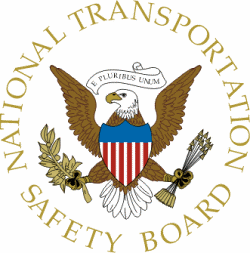
Today in History
18 Years ago today: On 25 June 2007 PMT Air flight PMT241, an Antonov An-24, impacted a mountain near Phnom Damrey, Cambodia, killing all 22 occupants.
| Date: | Monday 25 June 2007 |
| Time: | 10:40 |
| Type: | Antonov An-24B |
| Owner/operator: | PMT Air |
| Registration: | XU-U4A |
| MSN: | 99901908 |
| Year of manufacture: | 1969 |
| Total airframe hrs: | 35177 hours |
| Cycles: | 25837 flights |
| Engine model: | Ivchenko AI-24-II |
| Fatalities: | Fatalities: 22 / Occupants: 22 |
| Other fatalities: | 0 |
| Aircraft damage: | Destroyed, written off |
| Category: | Accident |
| Location: | Phnom Damrey - Cambodia |
| Phase: | En route |
| Nature: | Passenger - Scheduled |
| Departure airport: | Siem Reap-Angkor Airport (REP/VDSR) |
| Destination airport: | Sihanoukville (Kompong Som) Airport (KOS/VDSV) |
| Investigating agency: | AAIC Cambodia |
| Confidence Rating: | Accident investigation report completed and information captured |
Narrative:
PMT Air flight PMT241, an Antonov An-24, impacted a mountain near Phnom Damrey, Cambodia, killing all 22 occupants.
Flight 241 departed the Angkor temple town of Siem Reap (REP) at around 10:00. The Antonov 24 carried out a scheduled flight to Sihanoukville (KOS). The airplane flew into the side of Phnom Damrey Mountain at a height of 2700 feet.
CONCLUSIONS:
The accident was caused by the combination of the following adverse factors:
1- In bad weather conditions, the flight crew was carried out beyond the assigned flight track to a mountainous area without awareness of its exact position and of high terrain.
2- VMC (Visual Meteorological Condition) descent continued under improper weather conditions.
3- Poor management of the company.
Contributing factors:
- No clear information available to Sihanouk Ville Control Tower of the exact position of the aircraft.
- No evidence provided of recent proficiency check or CRM training of the crew.
